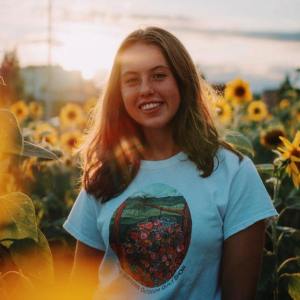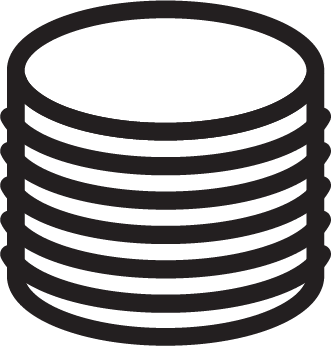How to Get Into Farming in Australia
Getting started in farming
Increased interested in rural property has been a by-product of the COVID-19 pandemic, and a question we've received a lot recently here at Farmbuy is "I want to be a farmer -- but where do I start?"
If you're a Sydneysider, Melburnian or other urbanite who has spent 2020 in and out of lockdown and glued to your computer, chances are you've wistfully considered a tree change at least once. However, it can be a stressful and confusing prospect to leave the city for life in unfamiliar country Australia, even if you're confident that getting back to nature is the right choice for you. These difficulties are compounded if your friends and family are fellow metropolitans, and you lack a rural support system to give you advice on making a move to the country.
To get some advice about getting started in farming for those who are newcomers to the agriculture industry, we spoke to Damien Crump of Crump Stock and Station Agency. Below are his best tips for becoming a first-generation farmer, on your own terms!
Farming FAQs
What should you ask yourself before buying a farm?
- Why?
Why do you want this rural property? To be self-sufficient ? To make money? To have a weekender?
- What?
What are you going to produce? Basically, here you have to ask yourself if your interest is in animals or plants. A big part of running livestock is the need to be on hand to feed/water/raise the animal.
- Where?
If, for instance, you’re buying a property and still keeping your job in the city, can you do a daily commute? If you’re buying a weekender, then who will keep an eye on the property during the week, including making sure livestock have feed and water?
Also consider proximity to markets; if you’re buying a horticultural block such as a stone fruit orchard, how far does the fruit have to be transported before it can be sold?
- Budget
As with buying any property, a budget has to be considered.
With rural property, the majority of lenders considers anything over 50 acres as commercial (dependent on financial institution). Commercial loans can come with higher interest rates and a higher capital input from the purchaser. For instance, you might be required to raise 30% of the value of the loan (LVR), so a $500,000 property could require you to have $150,000 (30%) injection to a 70% LVR.
Budgets should incorporate maintenance such as fencing and GST. The majority of inputs into any farm will have GST applied e.g. fencing, irrigation, livestock. If you can’t claim the GST back (GST registered) then your farm inputs become 10% dearer (talk to an accountant).
- Location
Some regions in Australia will be more suitable for your move than others, depending on what you’re interested in.
For example, the Upper Hunter in NSW is a fantastic region for Thoroughbred breeding and most properties will have infrastructure in place suited to the horse industry. Meanwhile, Moree and Narrabri are great regions for cotton, due to their rich black soil plains and water access. Certain cropping regions in Australia have more suitable climate, rainfall and soil type.
How can I find out what stock a piece of land will carry?
As previously alluded to, if you're buying a farm in the hopes of entering a particular agricultural industry, then buying in one of the traditional regions for that industry is your best bet.
If you’re wanting to graze and don’t know if it will run sheep, goats or cattle, then it would be best to speak with the local Stock & Station Agent. A good question to start with is: what has been traditionally run by the current owner?
A local farm advisor or Local Land Services (LLS) office will also have access to this information.
Is there a difference between sheep and cattle grazing country?
The short answer is yes. There are areas of Australia that are more suitable for sheep over cattle, and there are areas that are hopeless for sheep but will still fatten cattle.
To know the difference, we again come back to checking what has traditionally been carried and for how long. I’d recommend asking the local Stock & Station Agent, or whoever has the property listing.
How much land do I need for a lifestyle farm with a few cows, sheep or horses?
A true lifestyle property can be as small as just an acre — this could even cater for some livestock, if you wanted to keep a pony or a few sheep purely for entertainment purposes.
However, if you want more of a hobby farm or if you hope your property will serve as a secondary income stream, you will need to do your research on what kind of land you will need.
Size does play a part here, but I would be looking more at the production of feed and what your enterprise goals are. For example, a pregnant cow or cow with calf especially will need more water and feed than weaners (dry stock). Don’t forget your budget, either. Do you want to be paying for feed constantly?
Can you make a profit from breeding some cattle or sheep as a side project, without starting a commercial enterprise?
I would suggest that as little as 50-100 head of cattle or sheep could be considered a commercial venture. Certainly a profit could be made from this number of animals, or even fewer, but you have to think about whether the time you put into them is worth it.
Do your market research, get advice and don’t just rock up to the sale yards and buy 100 cows without knowing what you want to achieve!
Do your homework prior to committing yourself to ensure you start your rural property venture on the right foot. Rural Australia is a wonderful place, and has so much to offer! Pick the spot that tickles your fancy the most, and we guarantee you won’t regret it.

 Tanks
Tanks